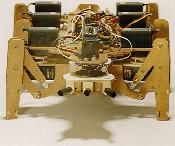Since taking over from Donald Rumsfeld as secretary of defense in the winter of 2006, Robert Gates has greatly scaled down the Pentagon's footprint on national security policy and intelligence.
Those are significant actions. Under Rumsfeld, the Pentagon had become the dominant force in US intelligence, with vast new powers in human intelligence and counter-terrorism, both at home and abroad. By 2005, it was deploying secret commando units on clandestine missions in countries as far afield as the Philippines and Ecuador, sometimes without consulting with the local US ambassadors and CIA station chiefs.
But these efforts by Gates and McConnell to demilitarize US Intelligence will never succeed until Congress, with the support of the next administration, removes the three national collection agencies - the National Security Agency (NSA), the National Geospatial-Intelligence Agency (NGA) and the National Reconnaissance Office (NRO) - from the Pentagon's command-and-control system and places them directly, like the CIA, under the control of the Office of the Director of National Intelligence (ODNI).
The NSA,
monitors billions of phone calls, e-mails and Internet messages
The NGA was formally inaugurated as a combat support agency of the Pentagon in 2003, and is therefore less known to the American public. It supplies imagery and mapping products
The NRO, meanwhile, builds and maintains the spy satellites that feed the NSA and NGA and operates ground stations, both at home and abroad, where imagery and signals data is translated, analyzed, and sometimes combined.
These three agencies probably supply about 75% of the information that appears every morning in the presidential daily brief, which intelligence officials say has evolved into a multi-media presentation in which NSA phone intercepts compete with NGA imagery and live video streams for the president's attention.
By combining intercepts of cell phone calls with overhead imagery gathered by unmanned aerial vehicles (UAVs), intelligence analysts can track suspected terrorists or insurgents in Iraq in real time. As these tools become available for use by domestic policing agencies, a possibility created by a new intelligence institution known as the National Applications Office, the power of the military to conduct both foreign and domestic intelligence will increase.
One of the only voices to press the case for civilianized intelligence is Melvin Goodman, a former CIA officer at the Center for International Policy.
"The collection of strategic intelligence is being given short shrift because of the military's emphasis on tactical intelligence and support for the warfighter," Goodman told me in an interview. While the nation can't deny intelligence support to warfighters in places like Iraq, "if you don't get the job of strategic intelligence done correctly, you will blunder in your larger national security policies," he says.
"Rumsfeld's view was that the CIA was frequently too rigid or too timid - or maybe both," Michael Isikoff and David Corn wrote in Hubris, their book about the administration's misuse of intelligence. In a 2001 meeting with Republican lobbyists described in the book, Rumsfeld "used the occasion to rail at the CIA" and declared: "I'm going to create my own intelligence agency."
Rumsfeld's first move in that direction was the creation of a new office within the Pentagon: under secretary for intelligence. Created by an act of Congress in 2002, the position was taken by Stephen Cambone, a neo-conservative who had worked closely with Rumsfeld during the 1990s as staff director of the Rumsfeld commission on ballistic missiles. The new position gave enormous powers to Cambone.
By 2005, special forces units under control of the Pentagon were routinely entering countries like Somalia and Iran to launch covert military operations. The NSA, NGA and NRO were enlisted to play key roles in Rumsfeld's "transformation" of the military through network-centric warfare: NSA signals and NGA imagery intelligence are now cornerstones of this 21st-century military doctrine.
Military power in intelligence was also concentrated at home. In 2002, deputy secretary of defense Paul Wolfowitz created the Counterintelligence Field Activity office, ostensibly to provide security at US military bases. By 2004, however, it was spending millions of dollars each year to monitor the activities of American citizens, including thousands of people who were simply exercising their rights to protest US foreign policy.
In a direct slap at Rumsfeld, Gates brought Clapper back into the Pentagon as under secretary of defense for intelligence, replacing the neo-con Cambone. Since then, Clapper has moved to dismantle some of Rumsfeld's pet programs, including the infamous TALON database created to spy on American citizens.
But bureaucratic maneuvers can only go so far in ending the Pentagon's direction of intelligence. Only a change in law, taking the NSA, NGA and NRO out of the department's hands and putting them under the direct control of the ODNI and the White House, will ensure that these agencies are under true civilian control.
Link
This is another example of the changes since Rumsfeld left the pentagon.
Tags: NSA, NGA, NRO ODNI, Rumsfeld, Clapper, Cambone, TALON
Powered by Qumana
 This little gem is less than $600 but smart kids in any country will learn how to hack them and send them on their way. What can this platform be used for? Can it carry weapons? How about surveilance? Tags:
This little gem is less than $600 but smart kids in any country will learn how to hack them and send them on their way. What can this platform be used for? Can it carry weapons? How about surveilance? Tags:  Tags:
Tags: